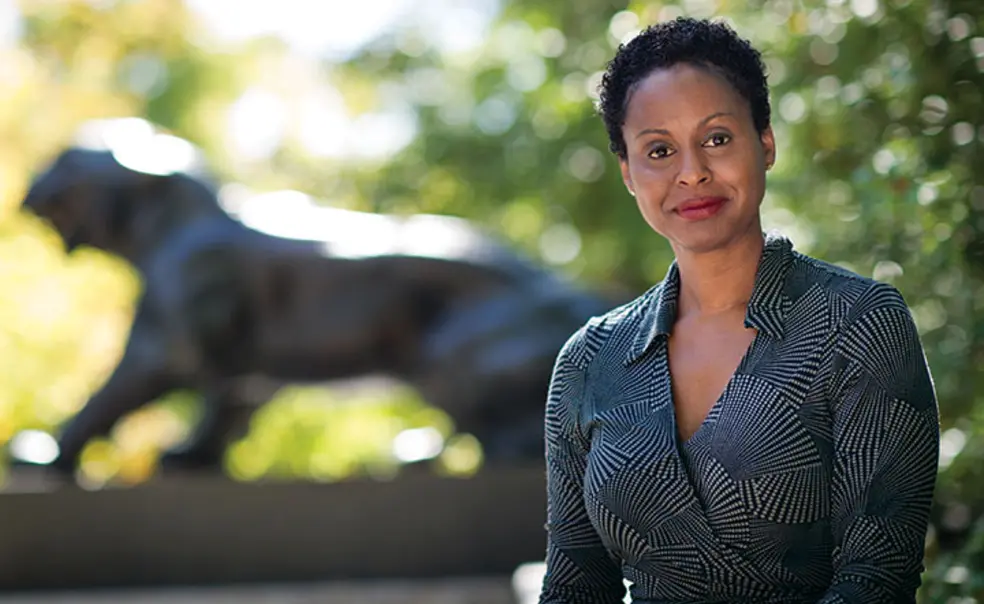African American Studies: Science of Racial Bias
Prejudices can shift, thanks to subtle social cues from others, according to Sinclair
Racial and gender bias can seem deeply ingrained, but wearing your egalitarianism on your sleeve can help reduce biased behavior in others, according to Stacey Sinclair, an associate professor of psychology and African American studies. In her research, Sinclair has discovered that our behavior can shift dramatically, depending on how biased we believe another person to be. Prejudice and egalitarianism are both contagious.
Sinclair calls this phenomenon “social tuning.” It’s common, she says, in situations where people feel uncertain or want to be liked; they unconsciously shift their behavior to match the values of the surrounding group.
In one experiment, Sinclair and her team recruited African American students who thought they were trying out for an academic team. The students were divided into groups and given two different descriptions of the person conducting the tryouts — one that made him seem like he held derogatory, stereotypical views of African Americans, and one that made him seem more egalitarian. Some students were told that the person evaluating them also was trying out, while others believed he was the team leader — in other words, someone who had power over them. Then they filled out surveys about their own academic performance. The students who were given the stereotypical description and believed that they were meeting the team leader downplayed their intellectual prowess. This “self-stereotyping,” according to Sinclair, happens instinctively and can be triggered by small social cues.
Sinclair’s research on the nature of implicit prejudice — defined as prejudice that is mostly unconscious — can help explain why some people’s social networks tend to be racially homogenous. White people with higher levels of implicit prejudice, Sinclair discovered, tend to avoid other whites they see interacting easily with African Americans, though those whites could broaden their social circle.
In a recent study, Sinclair explored whether instructors’ implicit prejudice might influence the quality of their teaching. White undergraduates were recruited to teach some unfamiliar material to a peer — either a white or African American student — who later would be tested. The results showed that the more implicitly biased their instructor, the worse the African American students did on the test. “If this turns out to be true with actual teachers in the classroom, we may have found a way to reduce the achievement gap,” she says.
The good news, according to Sinclair, is that displaying values that don’t support stereotypes can reduce implicit prejudice in others. She demonstrated this with interactions between a test subject and an experimenter who was wearing either a blank T-shirt or a shirt that said “Eracism,” a popular slogan for “erase racism.” Afterward, the subjects were asked whether they liked their partner and were given a test for implicit prejudice. Of those who reported that they liked the experimenter, the subjects paired with a partner wearing the “Eracism” T-shirt had lower levels of implicit bias — showing, Sinclair says, that interacting with a person refuting racism has a positive effect on others.
That’s why Sinclair encourages people to intentionally broaden their social networks: “If you’re clear that you value diversity, you really can change the minds of the people around you.”













No responses yet